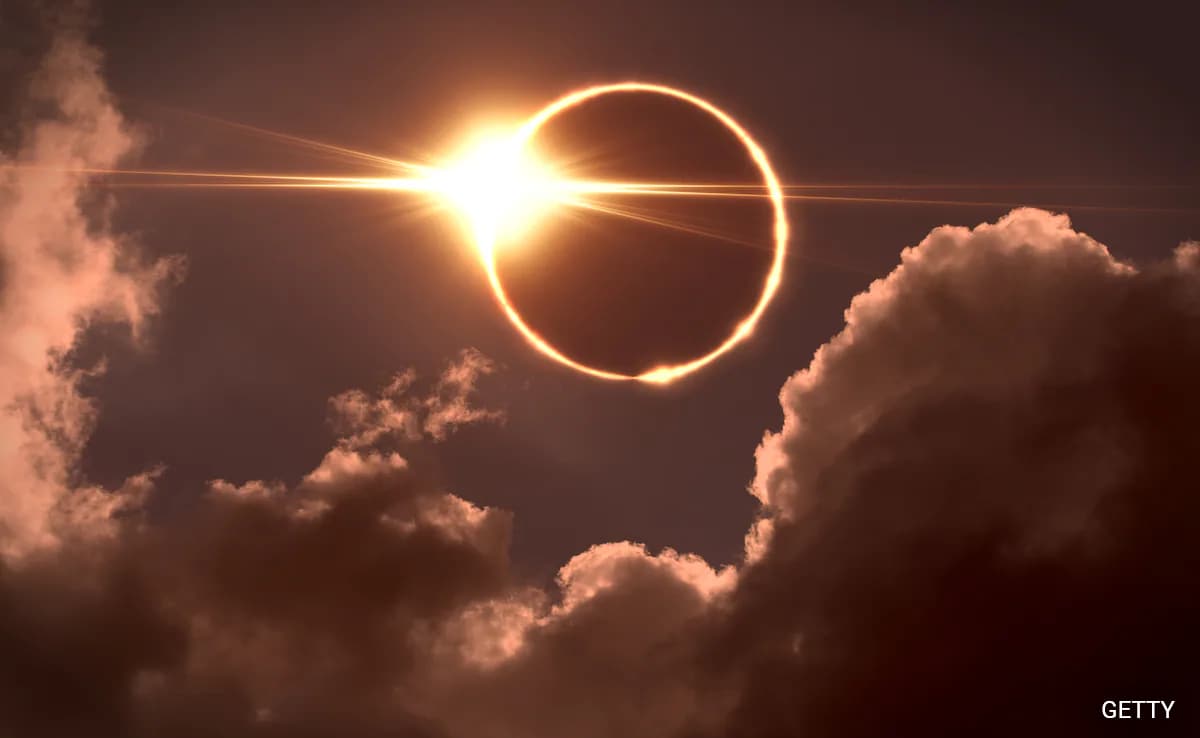
Solar eclipse will not be visible from India.
New Delhi:
India’s first space-based solar observatory, Aditya L1, is continuously studying the Sun but will miss the total solar eclipse today that will be visible over vast swaths of North America. The total solar eclipse is a rare event that people across the USA and several events, from skydiving to special flights, are being organized to witness the celestial phenomenon.
For the first time in almost a century, the western and northern parts of New York State will experience a total eclipse. The path of totality – a narrow stretch where the Moon obscures the Sun entirely – tracks across cities and has set the USA into a tizzy.
In its statement about the event, NASA says, “On April 8, 2024, a total solar eclipse will cross North America, passing over Mexico, the United States, and Canada. A total solar eclipse happens when the Moon passes between the Sun and Earth, completely blocking the face of the Sun. The sky will darken as if it were dawn or dusk.”
NASA is also flying special research planes to chase the shadow among many other experiments. Though the entire event will last for several hours, the main spectacle – when day turns to night – is expected to last only about four minutes when there will be total darkness.
But India’s Aditya L1 satellite will not be able to witness the event. This is not because the Indian Space Research Organization (ISRO) has erred, but because the satellite is placed appropriately at a location that provides an uninterrupted 24×7, 365-day view of the Sun. The Indian scientists chose a spot to ensure that the satellite’s view is never blocked due to an eclipse.
“Aditya L1 spacecraft will not see the solar eclipse as the moon is behind the spacecraft, at the Lagrange Point 1 (L1 point), the eclipse that is visible on Earth doesn’t have much significance at that location,” ISRO chairman S. Somanath told NDTV.
The Indian Aditya L1 spacecraft is placed in a halo orbit around the Lagrange point 1 (L1) of the Sun-Earth system, which is about 1.5 million km from Earth. A satellite placed in the halo orbit around the L1 point has the major advantage of continuously viewing the Sun without any occultation or eclipses. This provides a greater advantage of observing solar activity and its effect on space weather in real-time.

Aditya L1 weighs nearly 1,500 kilograms and is a scientific robotic satellite to keep a continuous eye on the Sun. This is India’s first dedicated mission to monitor the Sun, especially to understand what happens when the Sun becomes active. The solar observatory has been made at a cost of Rs 400 crore.
In fact, the Aditya L1 satellite creates its own artificial solar eclipse to effectively study the Sun with its special instrument, the Visible Emission Line Coronagraph (VELC). Mr. Somanath says, “A solar eclipse is created in the coronagraph by eliminating the light from the disc of the Sun.”
Dr. Dipankar Banerjee, a solar physicist with the Indian Institute of Astrophysics (IIAP), Bengaluru, says the spacecraft offers scientists the opportunity to see and study the corona of the Sun as seen from space and as viewed from the ground during a total solar eclipse.
Dr. Banerjee will be conducting some experiments on the ground in Dallas, Texas, USA, during today’s eclipse, and that data will be compared with Aditya L1 data for the same viewing period.
Nigar Shaji, the Project Director for the Aditya L1 satellite from ISRO, says that nothing will change in the Sun due to the eclipse.
“Due to the eclipse, nothing special happens to the Sun. The VELC spectroscopic channels will be operated in raster scan and sit and stare mode of operation [special observation modes] to observe the coronal structures in emission lines. This will be a joint campaign to corroborate with ground-based observations,” Ms. Shaji tells NDTV.
Aditya L1 carries seven payloads to observe the photosphere, chromosphere, and the outermost layers of the Sun (the corona) using electromagnetic, particle, and magnetic field detectors. Using the special vantage point L1, four payloads directly view the Sun, and the remaining three payloads carry out in-situ studies of particles and fields at the Lagrange point L1, thus providing important scientific studies of the effect of solar dynamics in the interplanetary medium.
Cautionary Note:
NASA says, “Except during the brief total phase of a total solar eclipse, when the Moon completely blocks the Sun’s bright face, it is not safe to look directly at the Sun without specialized eye protection for solar viewing. Viewing any part of the bright Sun through a camera lens, binoculars, or a telescope without a special-purpose solar filter secured over the front of the optics will instantly cause severe eye injury.”




